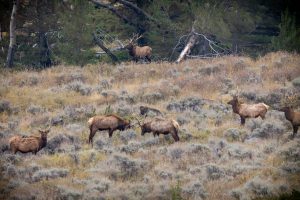Testing your Elk Fact knowledge
The Rocky Mountain elk (Cervis canadensis nelsoni) is a subspecies of elk found in the Rocky Mountains and the only subspecies of elk found in Wyoming. Elk are also called Wapiti, a Native American word that means “light colored deer” or “white rump”. Wyoming’s statewide elk population is estimated at 113,000 animals and currently the highest its been in well over 50 years. Elk can be found across most of Wyoming and in many areas they didn’t exist 40 years ago.
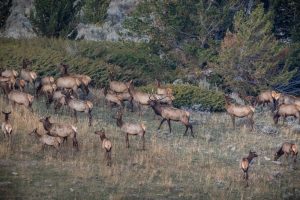
Wyoming’s bull elk will stand 5’ at the shoulder and weigh up to 700 lbs. Elk can measure up to 9’ tall from the ground to the top of their antlers. Cows will generally weigh up to 500 lbs and 4 ½’ tall at the shoulder. A mature bull can run as fast as 40 mph and jump eight feet vertically. Our Rocky Mountain elk sport the largest antlers of all the subspecies even though the Roosevelt elk have larger bodies. Elk lose their antlers in late winter and immediately start growing a new set. The new antlers will be covered in velvet and grow as much as an inch a day. The fully grown set of antlers will harden about the first of September when the bulls rub them on trees and brush to polish them and get them ready for the rutting season. A full set of antlers can weigh as much as 40 lbs. Bulls put on neck muscle to carry the fully grown antlers and prepare to do battle if needed to gather and protect a harem of cows.
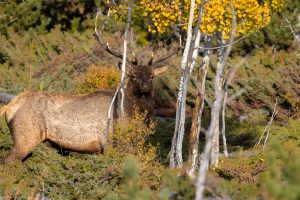
There is no big game animal in Wyoming that is more vocal than elk. A herd of cows will be constantly making noises that sound like chirps, mews, squeals and when they bark they are warning of danger. Bulls during the rut make that incredible, blood stirring sound we call a bugle. Scientists have been stumped for years about an elks bugle as its far too high to be produced by an elk’s voice box. Recently it was discovered that a bull makes the bugle by moving both his lips and his nostrils. That’s right: he’s roaring and whistling at the same time and that’s how he makes a bugle. When hunting elk hearing and smelling a herd of elk up close will be one of your greatest memories afield.
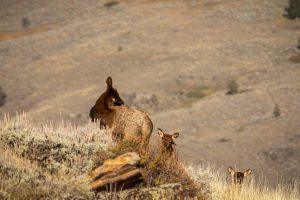
Our rut in Wyoming can begin as early as the first of September and go as long as the middle of October. The timeframe of mid-September through about October 10th is when we see the most breeding activity. An activity unique to bull elk is that of using a wallow. Bulls will find a shallow pool of water or mud hole in their home range, then the bulls add a special female attractant by urinating in the wallow. Bulls will return to the wallow several times during the rut to roll in the urine, soaked mud then head out to chase his cows. One thing is for sure, when you gut one of these bulls that is coated with mud and urine, it’s a smell you won’t soon forget, not to mention how badly it dulls knife blades.
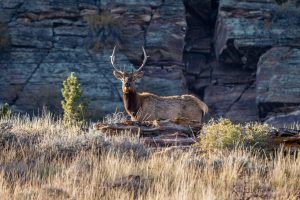
Elk are without a doubt one of the greatest success stories for modern day game management and the role hunters play as conservationists. Hunting elk gets into your blood and you will want to return time and time again to pursue them. It’s an addictive and unforgettable hunt. To plan your next elk hunting adventure with SNS Outfitter & Guides, call 307-266-4229.
